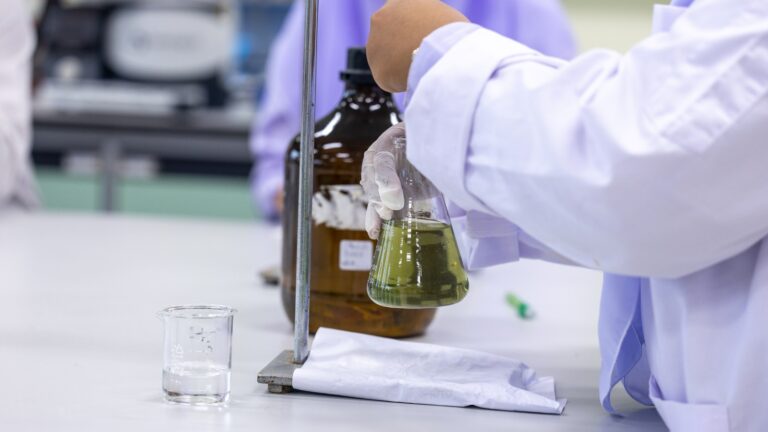Did you know that Biochemical Oxygen Demand, or BOD, is an important factor when it comes to wastewater treatment? Microorganisms and bacteria can grow and flourish in wastewater as long as there are biodegradable organics available. This is the reason behind maintaining a low BOD in the water treatment facilities, as it ensures water is clean and safe.
There are several strategies used to lower BOD in wastewater throughout the standard primary, secondary, and tertiary filtration phases. In this article, we will reveal the best and most effective strategies that are being employed to reduce the BOD levels in the wastewater treatment process.
What is Biochemical Oxygen Demand?

- BOD is an essential indicator of the amount of oxygen that microorganisms need when breaking down organic materials in the presence of oxygen at a certain temperature.
- In lakes and streams, dissolved oxygen is present and plays a crucial role in maintaining aquatic life despite the appearance of oxygen-free water.
- It is highly important to maintain a sufficient concentration of dissolved oxygen for the sake of health and good quality of water bodies.
- The dissolved oxygen levels in local aquatic habitats can be influenced by external stressors and human-caused factors like high temperatures and excessive fertiliser input.
- Looking into the BOD levels helps us understand the influence of organic matter on dissolved oxygen concentration, which results in guided water-quality management.
- BOD is an important indicator that shows the level of organic pollution in water and the effectiveness of aerobic bacterial breakdown processes, especially in wastewater treatment.
How to Reduce BOD in Wastewater

Lower TSS
Efficiently lowering of BOD begins with a strategic focus on Total Suspended Solids or TSS. If we consider the close relationship between TSS and BOD, it becomes challenging to achieve significant BOD reduction if TSS levels stay at a higher level. It is visible that some experts give priority to reducing TSS during their primary filtration process. One of the major facts that you need to pay attention to is understanding that suspended particles, even those that are invisible and as little as 2 microns, can affect BOD tests.
We can witness various methods being implemented to diminish TSS in wastewater, such as employing physical filtration equipment like rotary strainers or rod sieves. It is crucial to maintain this equipment because unfiltered solids could block filters that are broken. As we see, it is always better to chemically dissolve particles rather than only depend on filtration as the chemical additives in wastewater digesters help break down solid waste and minimise its disposal.
Equipped with the Proper Size EQ Tank
Consideration of the Equalisation (EQ) tank is another fact that is a top priority when aiming to decrease BOD. Can you believe the size of the EQ tank has a big influence on wastewater’s BOD levels? The size of the tank determines flow variations, which impact aeration changes in the water and have the potential to increase or decrease BOD. Wastewater treatment experts need to understand the appropriate loading rate of the water under treatment to calculate the right EQ tank size.
This rate varies from plant to plant and is mostly determined by the kind of water utilised and any additional organic substrates supplied to help with the treatment process. An appropriately sized EQ tank is the way to ensure balanced loading rates and flow variations for sure. It also helps with the most effective water movement to successfully reduce BOD in the wastewater treatment process.
High Rates of Aeration For Activated Sludge Processes
Maintaining high rates of aeration in treatment basins and lagoons stands out as a highly effective strategy for minimising BOD in wastewater. Being an essential component of activated sludge, aeration is undoubtedly a widely recognised technique for cleaning wastewater by removing impurities. When it comes to the biological processes, activated sludge uses helpful microorganisms to break down toxic sewage and clean water.
Let us explain how this occurs. Air diffusers are necessary for the helpful bacteria in activated sludge to receive the necessary oxygen, while BOD reduction can involve restricting the amount of oxygen available to negative bacteria. This ensures their survival long enough to break down the waste effectively. On the other hand, activated sludge operates by creating two aspects which are the beneficial bacteria and the waste sludge within the secondary clarifier and aeration basin. When you combine these aspects through aeration, the good bacteria are able to progressively transform the pollutants into waste sludge and then filtered out and disposed of properly in the secondary clarifier.
Implement Coagulation and Flocculation
The key components of improving the activated sludge process are flocculation and coagulation, which are essential for deliberately lowering BOD in the wastewater treatment process. First, it starts with coagulation, which is then backed up by flocculation. Let us elaborate on this more clearly. As it is necessary to spot the bigger particles over multiple smaller ones, coagulation arranges the combination or clumping of those particles. After the coagulation process takes place, flocculation takes over and brings the settled particles to the bottom of the tank.
Chemical flocculants have the ability to accelerate this process by launching the production of activated sludge, which removes unwanted sewage as the outcome. They are usually added to the secondary clarifier basin. Treatment facilities that want to be more efficient or that are having trouble with flocculation can speed up the process by adding more of these floating agents. As it is evident, the management tends to utilise various flocculants, including aluminium sulphate and iron-based options like ferric chloride and ferrous sulphate in today’s complex wastewater treatment processes. The management can make a wise choice based on certain factors, such as pollution and entering suspended solids, which may enhance the efficacy of iron-based flocculants.
Maintaining Low Temperatures
When it comes to wastewater treatment plants, understanding the inverse connection between BOD and dissolved oxygen (DO) levels is quite essential. Why is that? In the wastewater arena, low BOD and high DO levels are advised because dissolved oxygen is necessary for the action of helpful bacteria that break down organic materials and lower BOD. As many plants focus on new compounds or flocculations, they unintentionally ignore the effect of high temperatures on DO levels.
If you keep monitoring water temperature during the treatment process, it will provide the possibility to efficiently enhance BOD reduction. Especially in treatment basins where BOD reduction is slow, lowering the temperature might encourage the growth of helpful bacteria as a powerful strategy. The activated sludge may not work well in extremely low temperatures, such as those that are close to freezing. This whole process of optimising BOD reduction requires striking the correct balance between supporting effective activated sludge operations and keeping moderate temperatures for high DO levels.
Implement the Right Strategies at the Right Time

It is a world full of strategies and choices to help with business success. However, the success rate depends on implementing the right strategies at the right time. While one wrong decision keeps you off track, a wise choice will provide a ladder for you to climb up in the business world. This is why you should consider the effectiveness of the Strategies you implement for reducing BOD in the wastewater treatment proceedings.







